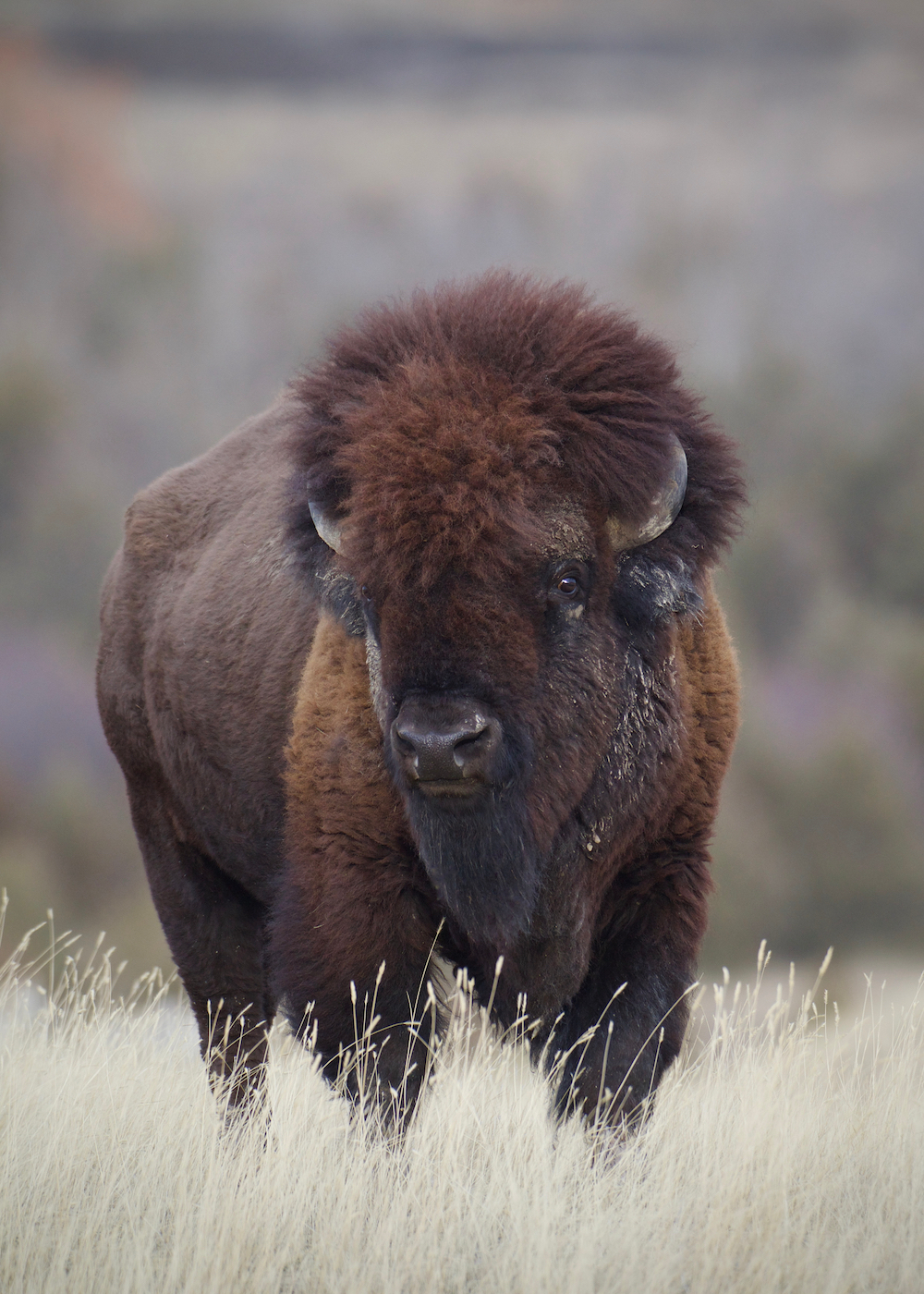South Arkansas is a region teeming with natural beauty and rich history. Amidst the dense forests and flowing rivers, a remarkable species once roamed freely, leaving an indelible mark on the land and its people. As we celebrate National Bison Month this July, let us delve into the captivating story of the American bison, highlighting its historical presence in South Arkansas, the tragic decline it faced, and the crucial conservation efforts underway to ensure its survival.
For thousands of years, mass herds of bison thrived in the Saline River basin, encompassing what we now know as South Arkansas. These magnificent creatures, often referred to as the “thundering hooves of the Great Plains,” played a vital role in shaping the region’s ecosystem and the lives of the indigenous peoples who coexisted with them.
The bison, also known as the American buffalo, holds immense importance in Native American cultures across North America. For countless generations, these majestic creatures have been deeply intertwined with the spiritual, cultural, and physical existence of numerous indigenous tribes. The bison’s significance transcends mere sustenance; it encompasses reverence, symbolism, and a way of life.

First and foremost, the bison provided a critical source of sustenance for Native American tribes. These massive animals supplied meat, which became a staple in their diet, and their hides were used for clothing, shelter, and various other essential items. Every part of the bison was utilized, ensuring that no part went to waste. Tribes developed intricate methods of hunting, such as the buffalo jump, where groups coordinated efforts to drive herds over cliffs, maximizing efficiency and minimizing waste.
Beyond their practical importance, bison held great spiritual and cultural significance for Native American communities. They were seen as sacred beings, embodying strength, resilience, and abundance. Tribes held deep reverence for the bison, and their rituals, ceremonies, and stories often revolved around these majestic creatures. Bison were considered gifts from the Creator, and their existence was seen as a testament to the harmonious relationship between humans and nature.
The bison’s symbolism extended beyond sustenance and spirituality. They represented unity, community, and survival for Native American tribes. These animals thrived on the Great Plains, and their abundance provided tribes with a sense of security and stability. The bison’s migratory patterns shaped the movement and lifestyles of Native American communities. They followed the herds, establishing seasonal camps and adapting their way of life to the rhythms of the bison’s existence.
As late as the 1820s, settlers flowing into the area, which is now Bradley County, were witness to the awe-inspiring sight of bison roaming across the vast landscape. These settlers encountered an ecosystem in balance, with the bison at its heart. The bison’s presence provided sustenance, clothing, and shelter for Native American tribes such as the Quapaw and Caddo, who deeply revered these majestic creatures.
However, the arrival of European settlers brought dramatic changes that irreversibly impacted the bison population. Uncontrolled hunting, habitat destruction, and the disruption of natural migration patterns led to a rapid decline in bison numbers. The bison, once numbering in the millions, were driven to the brink of extinction within a few short decades.

The devastating consequences of human actions nearly wiped out the bison entirely. By the late 1800s, only a few hundred individuals remained scattered across isolated pockets of the American West. Recognizing the gravity of the situation, early conservationists and Native American tribes rallied to save the bison from certain annihilation.
Their efforts eventually led to the establishment of protected areas and the development of breeding programs, ensuring the survival of the American bison. Today, through conservation initiatives and dedicated organizations such as the American Bison Society and the National Bison Range, the bison population has rebounded to approximately half a million individuals. While this progress is commendable, much work remains to be done.
Efforts are underway to honor the bison’s historical presence and restore a connection with this iconic species. Conservation organizations, wildlife agencies, and communities are collaborating to raise awareness and actively participate in initiatives that contribute to bison conservation.
During this National Bison Month, let us reflect on the history of the American bison in South Arkansas and the importance of our continued efforts to protect and conserve this magnificent creature. By embracing our past and working together, we can write a new chapter in the story of the bison, a story that celebrates resilience, restoration, and the unwavering commitment to safeguarding our natural heritage.


